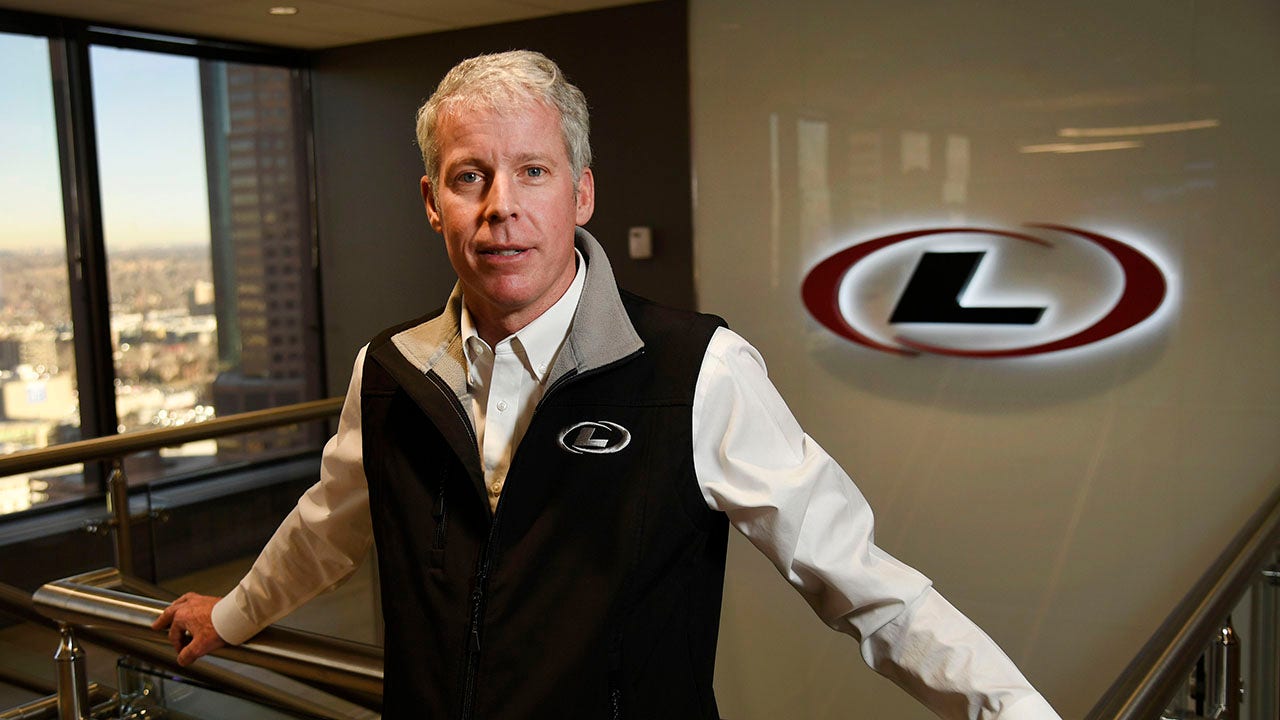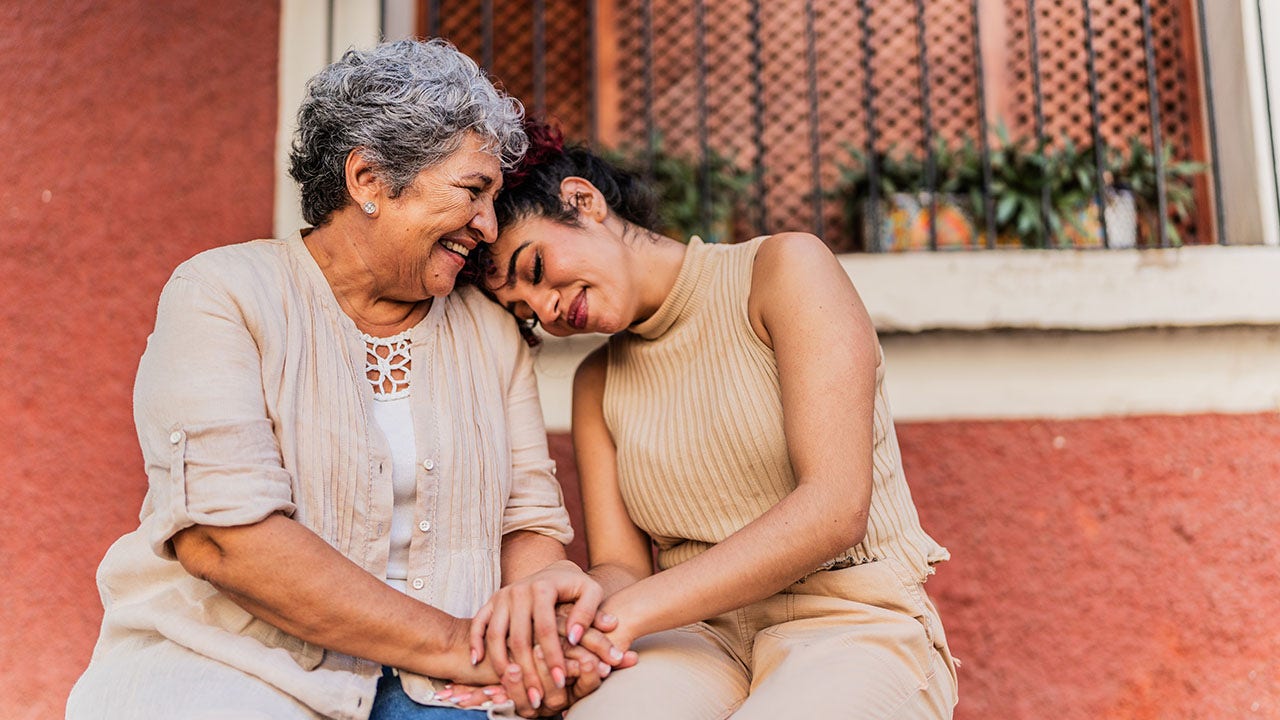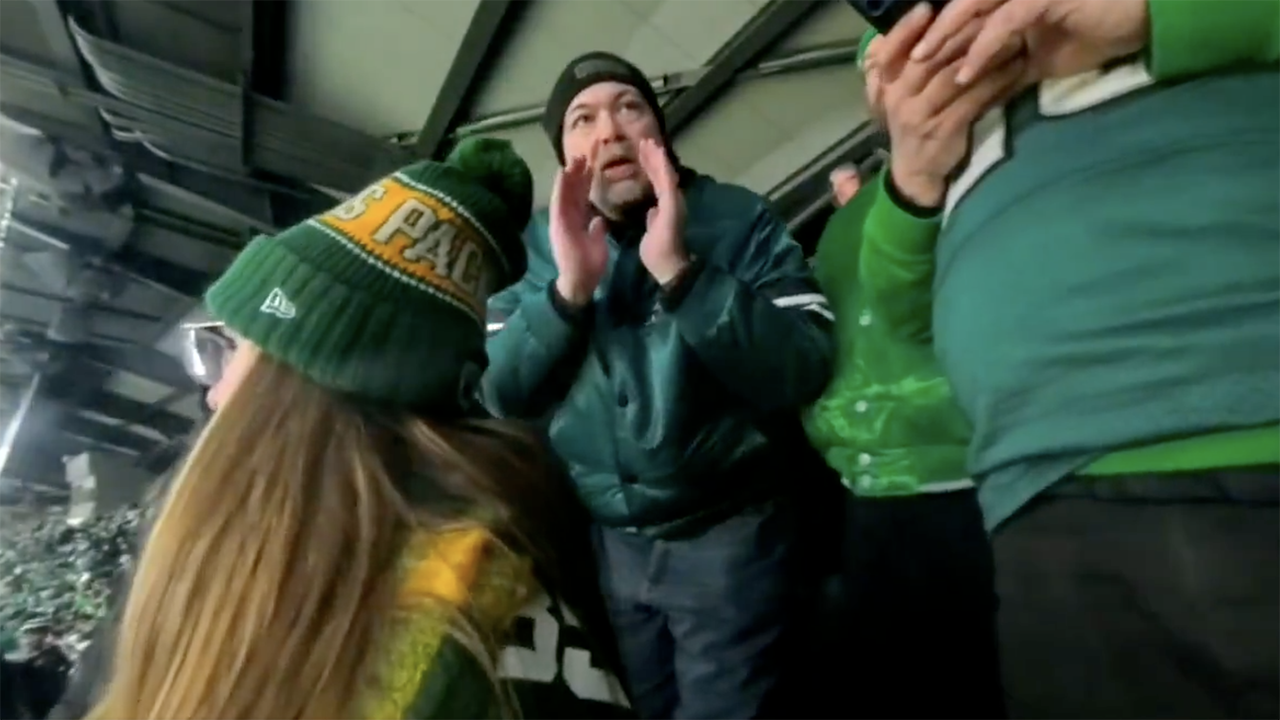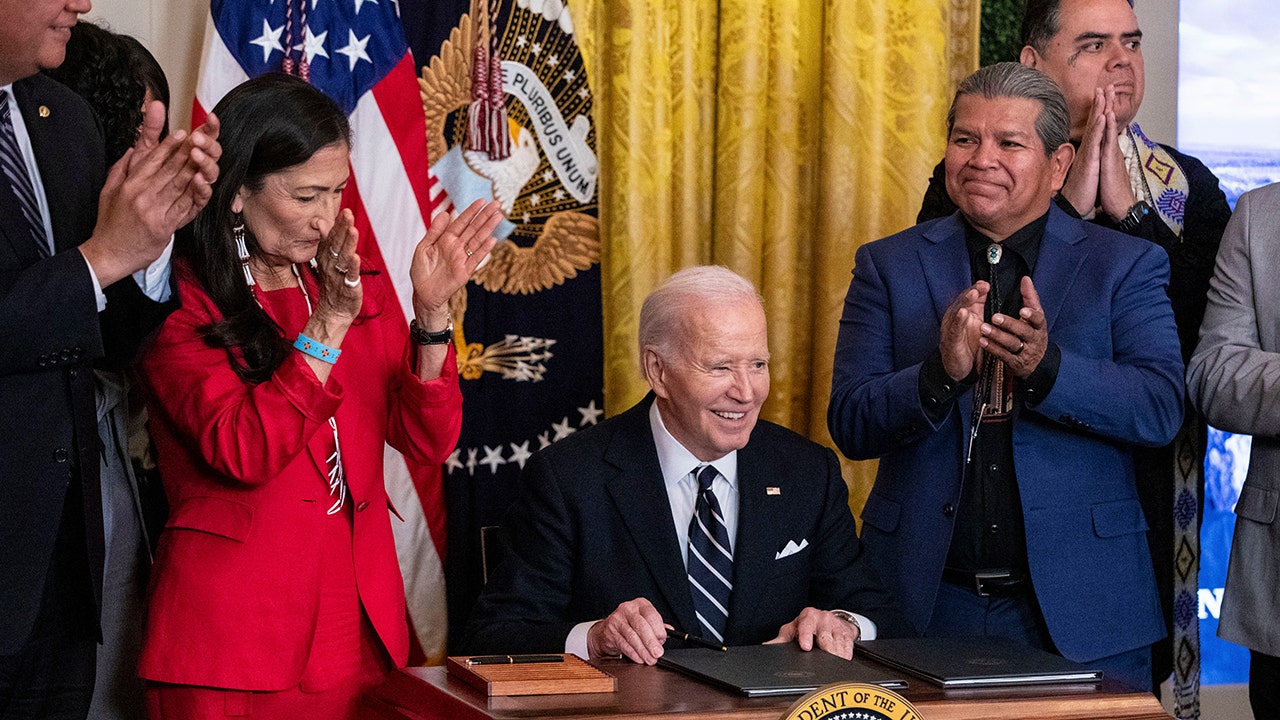Lifestyle
Lucille Ball’s hometown is a comedy destination. No joke

Acts range from family-friendly slapstick to edgy stand-up at the four-day comedy festival put on by The National Comedy Center in Jamestown, N.Y. — that’s the birthplace of I Love Lucy star Lucille Ball, who was born Aug. 6, 1911.
Brendan Halbohm/National Comedy Center
hide caption
toggle caption
Brendan Halbohm/National Comedy Center
Before she died in 1989, Jamestown, N.Y., officials approached Lucille Ball with the idea for a museum. But she told them: “Don’t just celebrate me — don’t just put my stuff in glass cases,” said Journey Gunderson, executive director of The National Comedy Center, “make my hometown a destination for the celebration of all comedy and its artists.”
So that’s what they did.
There’s certainly a lot that celebrates Lucy in Jamestown: In addition to the National Comedy Center,there’s the Lucille Ball Desi Arnaz Museum that displays costumes, memorabilia and replicas of the original I Love Lucy set and Ricky Ricardo’s Tropicana club.
Visitors can take a “Lucytown” bus tour to see the homes where she was born and raised, her gravesite, and one of the buildings where she performed as a teen.
But Jamestown does far more than celebrate just Lucy. The National Comedy Center, a few blocks away from the Lucy and Desi museum, showcases everything from black-and-white cinema slapstick to the bluest standup comedy. There are dozens of interactive exhibits, like a stand-up lounge where visitors can get on stage, take the mic and see what it’s like to try to make an audience laugh.
During the annual festival, which takes place around Ball’s August birthday, you can see a number of attendees dressed in her trademark polka dot dress.

Fans dressed up as Lucille Ball at the Lucille Ball Comedy Festival in Jamestown, N.Y., in 2024.
From left, Elizabeth Blair/NPR; Lena McBean/National Comedy Center; Elizabeth Blair/NPR
hide caption
toggle caption
From left, Elizabeth Blair/NPR; Lena McBean/National Comedy Center; Elizabeth Blair/NPR
This year’s headliners were Nate Bargatze, who’s been called “The nicest guy in stand-up” and Nicole Byer, the comedian/actor who’s currently hosting Netflix’s reality baking show Nailed It! The festival also brought in a number of rising stars who performed standup at the Tropicana.
Jamie Bogert came to the festival from Philadelphia with her mother. She said all of the different activities showed them how Ball helped “pave the way in so many ways for comedy.”
“I think having the Lucy museum part of Jamestown and then having this new comedy center is just such a perfect combination,” said Bogert. “We were saying, it was so great to see comedians last night and like, maybe it’s their start and they’re trying to get their name out or whatever else.”
Respect for comedy
Even when the festival is not in town, the center is more than a collection of artifacts. The tour begins with visitors creating their personal comedy profiles by selecting their favorite comedians, TV shows and movies. Once created, your wristband allows you to tailor some of the exhibits to your personal preferences.

Lucille Ball circa 1955.
Evening Standard/Hulton Archive/Getty Images
hide caption
toggle caption
Evening Standard/Hulton Archive/Getty Images
There are interactive exhibits, like comedy karaoke, and a green screen where you can try to perform the iconic chocolate candy conveyor belt scene from I Love Lucy or Abbott and Costello’s famous “Who’s on First” bit.
Extensive exhibits are dedicated to comedy idols like Johnny Carson, Carl Reiner and George Carlin.
Byer said she’d heard about the museum, but “didn’t realize the depth of it.”
One of her favorite comedians is Rodney Dangerfield, known for starring in Back to School and Caddyshack and for his “I don’t get no respect” standup routine.
Byer loved seeing the duffle bag that he took from gig to gig, his handwritten jokes and his trademark suit and red tie.
“I didn’t know he was so trim,” she laughed.
It’s fitting that Dangerfield joked about getting no respect, because comedians often don’t, said the National Comedy Center’s Gunderson. Too many people don’t understand that comedy is its own art form.
That’s why one of the goals of the museum is to show visitors “the intensity and the rigor of the process,” Gunderson said. Something Lucille Ball knew well.
The audio version of this story was edited by Jennifer Vanasco; the digital story was edited by Vanasco and Beth Novey.


Lifestyle
‘Modern Love’ Podcast: Hank Azaria’s Advice for Overcoming Codependency

Hank Azaria is used to putting on other personalities. You probably know him best from his work as a voice actor on “The Simpsons,” where he plays Moe the bartender, Professor Frink, Chief Wiggum and Snake Jailbird, among many others. His list of credits in stage plays, movies and TV shows is prolific, including roles like his Tony-nominated performance in “Spamalot,” Phoebe’s boyfriend on “Friends” and the dog walker on “Mad About You.” But at a certain point in his life, Azaria realized that he was using humor and acting to be anyone but himself, and that it was affecting his real-life relationships. After five devastating heartbreaks, he resolved to look inward, address his codependency issues and become his most authentic self.
In this episode, Azaria tells us how he found authenticity and reads the Modern Love essay “In Defense of My Emu Tattoo,” about an author who masks his true self by using humor but eventually finds love by learning to be himself.
How to submit a Modern Love Essay to The New York Times
How to submit a Tiny Love Story
Unlock full access to New York Times podcasts and explore everything from politics to pop culture. Subscribe today at nytimes.com/podcasts or on Apple Podcasts and Spotify.
Links to transcripts of episodes generally appear on these pages within a week.
Modern Love is hosted by Anna Martin and produced by Reva Goldberg, Emily Lang, Davis Land and Amy Pearl. The show is edited by Jen Poyant, our executive producer. Production management is by Christina Djossa. The show is mixed by Sophia Lanman and recorded by Maddy Masiello and Nick Pitman. It features original music by Pat McCusker, Dan Powell, Aman Sahota, Rowan Niemisto and Diane Wong. Our theme music is by Dan Powell.
Special thanks to Larissa Anderson, Dahlia Haddad, Lisa Tobin, Brooke Minters, Daniel Jones, Miya Lee, Mahima Chablani, Nell Gallogly, Jeffrey Miranda, Isabella Anderson, Christine Nguyen, Reyna Desai, Jordan Cohen, Victoria Kim, Nina Lassam and Julia Simon.
Thoughts? Email us at modernlovepodcast@nytimes.com.
Want more from Modern Love? Read past stories. Watch the TV series and sign up for the newsletter. We also have swag at the NYT Store and two books, “Modern Love: True Stories of Love, Loss and Redemption” and “Tiny Love Stories: True Tales of Love in 100 Words or Less.”
Lifestyle
Nuccio’s Nurseries' famous camellias survived the Eaton fire. But with no water, what now?

After 90 years of breeding and selling rare camellias and azaleas to customers all over the world, Nuccio’s Nurseries in Altadena is expected to close by the end of 2025. But the ongoing Eaton fire and its ashy aftermath don’t appear to be offering the ending the nursery’s owners had in mind.
The Eaton fire swept into the Chaney Trail Road neighborhood sometime early on Jan. 8, leap-frogging some homes and gutting others. The nursery’s old family home burned to the ground, as did several wooden outbuildings. The small house was where Tom Nuccio, 77, who co-owns the nursery with his brother Jim, 75, lived.
Tom Nuccio was in the hospital for non-life-threatening issues when the fire erupted. Their 92-year-old cousin Vicky, who also lived in the house, was safely evacuated.
Miraculously, the fire barely touched the area of the nursery where thousands of potted camellias and azaleas were ready for sale under a breezy wood-lathe framework covered by shade cloth.
A few of the plants near the burned structures were singed, and many in the nursery’s shade area were pushed over by wind gusts reportedly approaching 100 mph. But the nursery’s massive oak tree and many of its tall camellia trees appeared unscathed.

In a December 2024, photo, Jim, left, and Tom Nuccio stand in front of one of the nursery’s ramshackle wood storage buildings and a profusely blooming deep pink camellia known as Dazzler, a variety developed by the Nuccio family. Neither the building nor the plant survived the fire.
(Jeanette Marantos / Los Angeles Times)
The problem now is water. The camellias and azaleas were last watered Jan. 7, and the hot dry Santa Ana winds suck moisture from even well-hydrated potted plants. Jim Nuccio figures that their plants, which are easily worth at least tens of thousands of dollars, can survive perhaps another week without water.
He’s been able to visit the nursery only twice since the fire began, once by sneaking along back roads Jan. 8 before officials curtailed access to the burned areas, and again for a short visit over the weekend.
During the latter visit, he was able to grab about 125 of the rarest varieties for two botanical gardens, Descanso Gardens in La Cañada Flintridge, which has one of the world’s most famous camellia collections, and the Huntington Library, Art Museum, and Botanical Gardens in San Marino.
“We wanted to do this anyway [donate their rarest camellias] because those gardens have been customers for years, and we thought, ‘There’s no better time then now while the plants are still alive.’ People won’t be able to buy them, but at least they’ll be able to see them.”
Donating the plants isn’t a big deal, he said, laughing: “We haven’t made money in 90 years, so why start now?”

Two days after the Eaton fire raged through Nuccio’s Nurseries in Altadena, the area is still smoking. Many trees, shrubs and almost all its potted camellias and azaleas survived unscathed.
(Jeanette Marantos / Los Angeles Times)
The nursery went up for sale in 2023, and it had a prospective buyer, Pasadena’s Polytechnic School. However, the school pulled out after months of community opposition to its plan to create an athletic complex on part of the property. The Nuccio family began talks in December with the Trust for Public Land, but the Eaton fire has put negotiations on hold.
Jim Nuccio said he’s been inundated with calls from people wanting to help. A longtime customer in San Diego, Kathy Liu of Joey’s Wings Foundation, started a GoFundMe page for the nursery with a goal of $18,000 to help cover expenses.
The Nuccio brothers “are the kindest people I know of,” Liu wrote on the GoFundMe page, adding that her foundation has been working with the nursery for six years to sell camellias as a fundraiser in the Bay Area and in San Deigo.
“The last fundraiser with the nursery was just last month in December, 2024,” Liu wrote. “We sold over 1,000 pots of camellias in [the] Bay Area and San Diego. The brothers drove two trucks of camellias all the way from Altadena to the San Francisco Bay Area and they refused to let us pay for any cost, including the camellias.”

Tom Nuccio walks under a towering oak tree and a row of tall planted camellias in 2023. The nursery’s trees and potted plants around them escaped damage in the Eaton fire.
(Dania Maxwell / Los Angeles Times)
Jim Nuccio brushed that praise aside. He and his brother are grateful for the fundraising, he said, but there are others in Altadena with far greater needs. (Jim Nuccio’s home in Altadena was spared; he and his wife, Judith, have been evacuated since the fire began.)
For now, the Nuccio brothers are hoping that they’ll get a chance to wind down the nursery on their own terms, but that will require getting water to their thirsty plants very soon.
“A few of our azaleas are already starting to wilt, but most of the camellias are fine under the shade cloth, at least for now,” Jim Nuccio said. “I’m cautiously optimistic we’ll get a chance to reopen. Hopefully, they’ll get our reservoirs replenished.” And, he said, he’d heard reports of possible rain later in the month.
Then he trailed off suddenly and sighed. “But I’m not banking on any of that.”
Lifestyle
Neil Gaiman has responded to sexual misconduct allegations

Neil Gaiman attends the 73rd National Book Awards in November 2022 in New York City.
Dia Dipasupil/Getty Images
hide caption
toggle caption
Dia Dipasupil/Getty Images
Neil Gaiman, one of today’s most influential and commercially successful novelists, has been accused by multiple women of sexual misconduct. The author has denied the allegations. This is what you should know.
- Gaiman’s books include the graphic novel The Sandman, the children’s novella Coraline and a novel he co-wrote with Terry Pratchett, Good Omens. The British author has won prestigious literary honors, including multiple Hugo, Locus and Nebula awards and the John Newbery Medal. His works have inspired movie and TV adaptations. Time magazine included him in its list of the 100 Most Influential People of 2023.
- The sexual misconduct accusations, stretching back decades, first became public in the summer of 2024 in a six-episode series from Tortoise Media called The Master: The Allegations Against Neil Gaiman. In the podcast, five women accused the writer of unwanted sexual behavior, some of it alleged to be violent in nature. Gaiman denied the accusations. No charges have been filed. The podcast included interviews with the women, plus what it said were WhatsApp messages and phone call recordings between Gaiman and two of his accusers. In one conversation, Gaiman allegedly says he “obviously f*** up” and offers to pay an accuser, who goes by the name “Claire,” $60,000 to cover the cost of her therapy. NPR has not been able to independently verify the recordings because “Claire’s” identity is not public.
- More women have now accused Gaiman of sexual misconduct in a New York Magazine cover story published Monday. Some of the alleged behaviors include violent sexual assault and sexual misconduct that occurred while his young son was in the room. Gaiman has denied this. Gaiman’s accusers are adults, but much younger than the author, 64, including one who is nearly 40 years his junior.
- Gaiman responded to the allegations on Tuesday in a lengthy post on his website. Gaiman wrote that he watched the news of the allegations “with horror and dismay”: “As I read through this latest collection of accounts, there are moments I half-recognise and moments I don’t, descriptions of things that happened sitting beside things that emphatically did not happen. I’m far from a perfect person, but I have never engaged in non-consensual sexual activity with anyone. Ever.” He also denied “there was any abuse.”
- Recent fallout has included the suspension of screen adaptations of Gaiman’s works. Deadline reported that Amazon will end production of Good Omens with a 90-minute final episode to be produced this year, instead of a full third season. “Gaiman contributed to the writing of the series finale but will not be working on the production and his production company the Blank Corporation is no longer involved,” Deadline said. Disney paused an adaptation of The Graveyard Book.
- Trade magazine The Bookseller reported that Gaiman hired the crisis management firm Edendale Strategies and lawyer Andrew Brettler, who has represented Danny Masterson and Prince Andrew. Neither party has responded to NPR’s request for comment.
Jennifer Vanasco edited this story. Beth Novey produced the web build.
-

 Health1 week ago
Health1 week agoOzempic ‘microdosing’ is the new weight-loss trend: Should you try it?
-
/cdn.vox-cdn.com/uploads/chorus_asset/file/25822586/STK169_ZUCKERBERG_MAGA_STKS491_CVIRGINIA_A.jpg)
/cdn.vox-cdn.com/uploads/chorus_asset/file/25822586/STK169_ZUCKERBERG_MAGA_STKS491_CVIRGINIA_A.jpg) Technology6 days ago
Technology6 days agoMeta is highlighting a splintering global approach to online speech
-

 Science4 days ago
Science4 days agoMetro will offer free rides in L.A. through Sunday due to fires
-
/cdn.vox-cdn.com/uploads/chorus_asset/file/25821992/videoframe_720397.png)
/cdn.vox-cdn.com/uploads/chorus_asset/file/25821992/videoframe_720397.png) Technology1 week ago
Technology1 week agoLas Vegas police release ChatGPT logs from the suspect in the Cybertruck explosion
-

 Movie Reviews1 week ago
Movie Reviews1 week ago‘How to Make Millions Before Grandma Dies’ Review: Thai Oscar Entry Is a Disarmingly Sentimental Tear-Jerker
-

 Health1 week ago
Health1 week agoMichael J. Fox honored with Presidential Medal of Freedom for Parkinson’s research efforts
-

 Movie Reviews1 week ago
Movie Reviews1 week agoMovie Review: Millennials try to buy-in or opt-out of the “American Meltdown”
-

 News1 week ago
News1 week agoPhotos: Pacific Palisades Wildfire Engulfs Homes in an L.A. Neighborhood
/cdn.vox-cdn.com/uploads/chorus_asset/file/25832232/honor_magic_7_pro.jpg)












